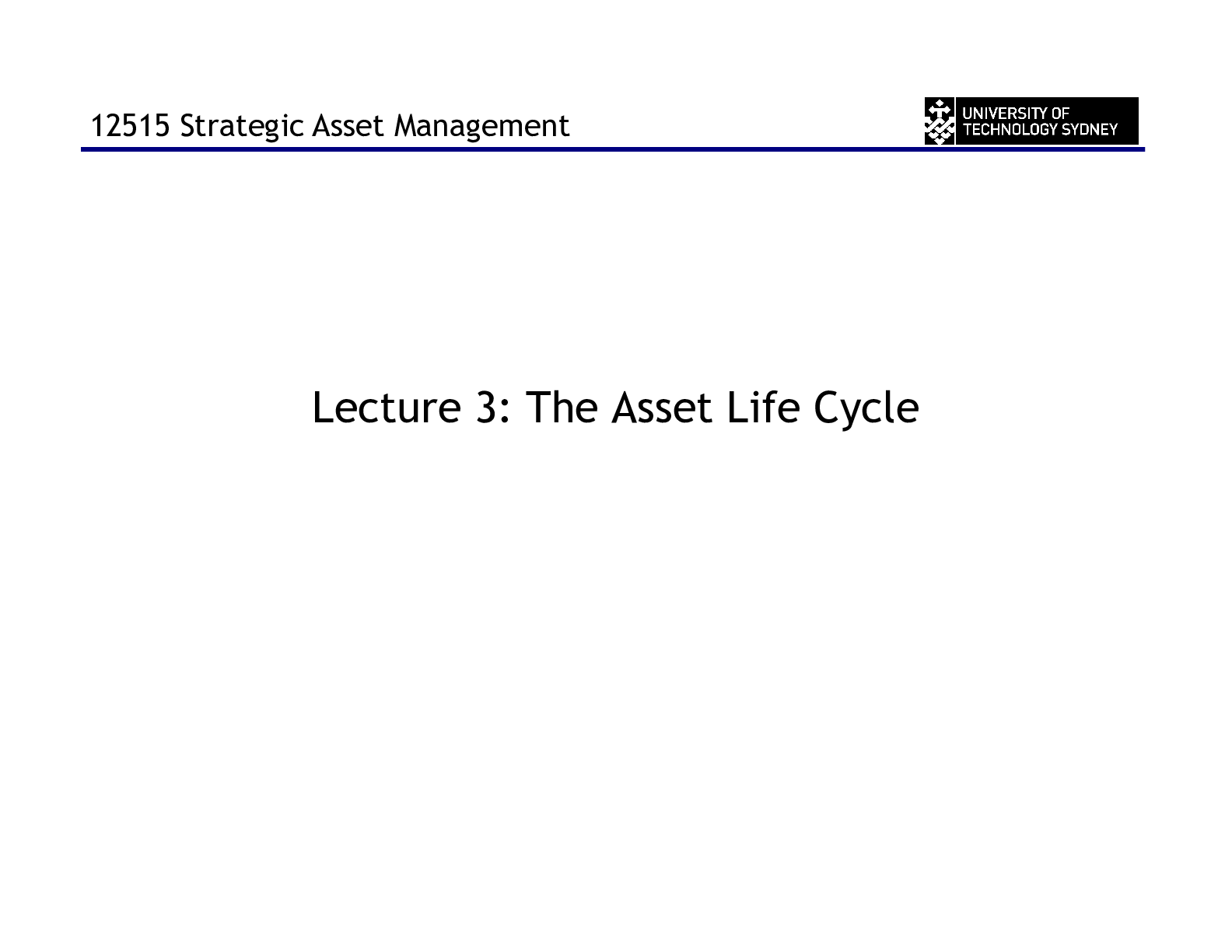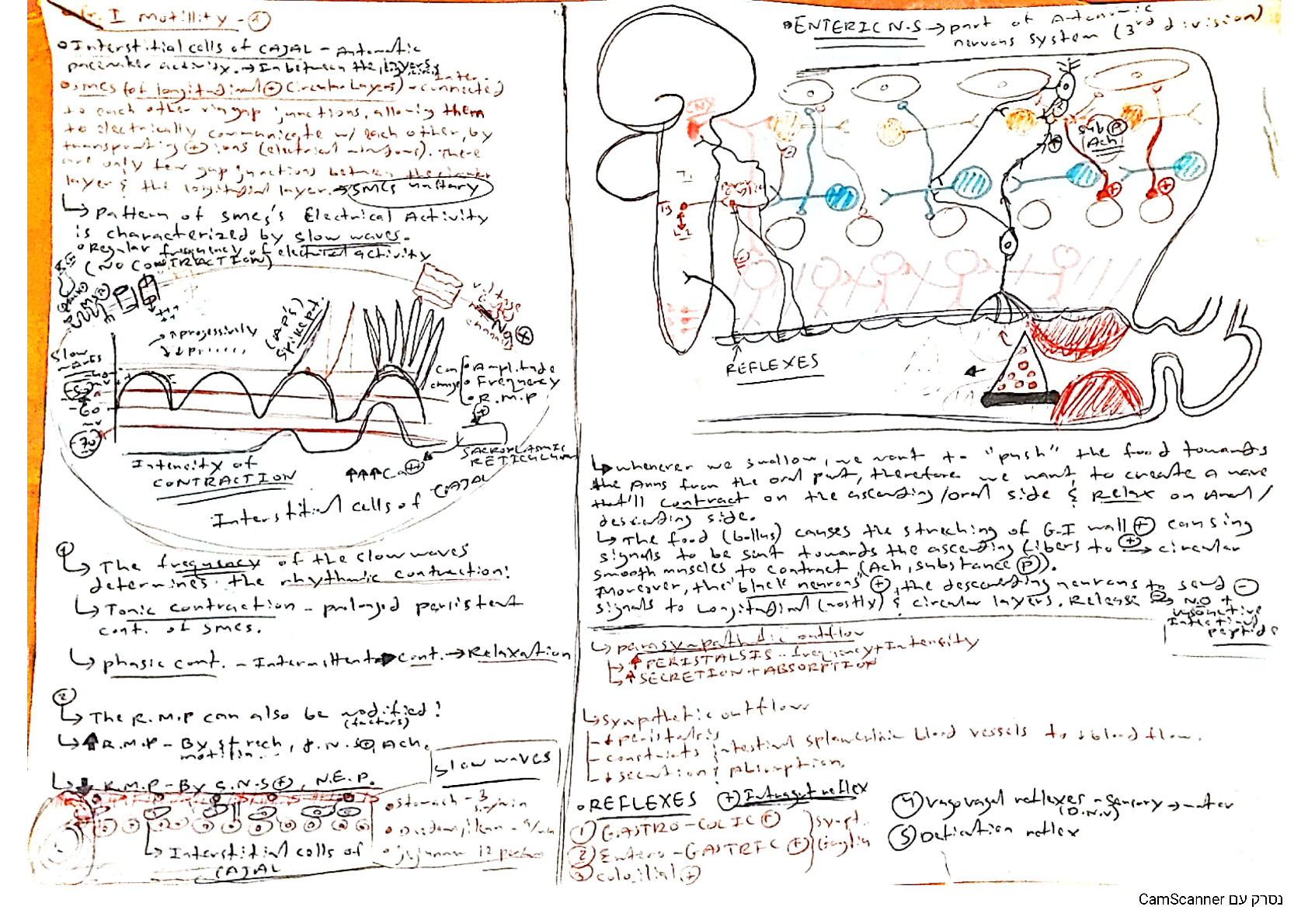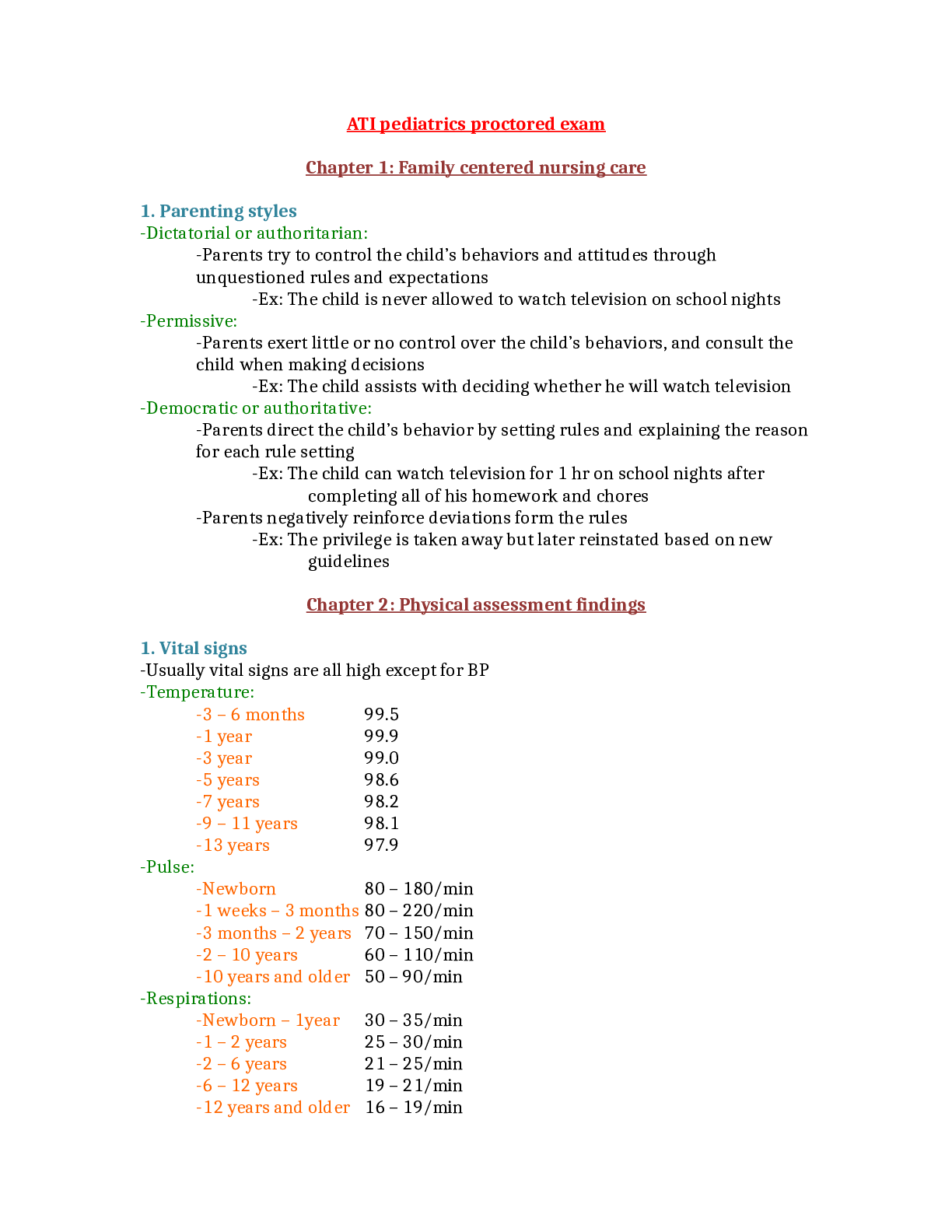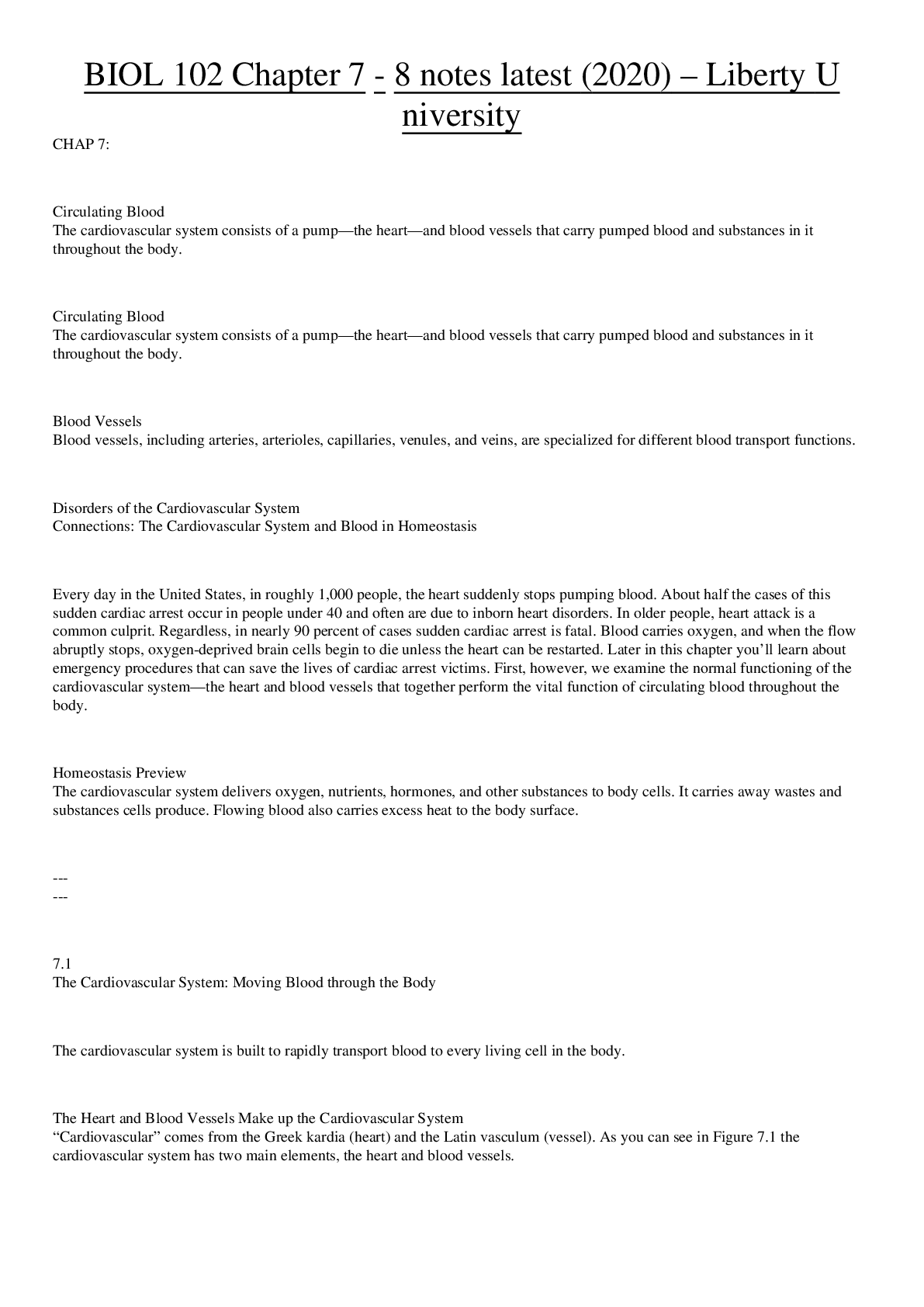Economics > LECTURE NOTES > Economic growth: The Stylised Facts of Growth (All)
Economic growth: The Stylised Facts of Growth
Document Content and Description Below
We now turn from the determination of output in the short and medium run—where fluctuations dominate—to the determination of output in the long run—where growth dominates. Growth is the stead... y increase in aggregate output over time Economic growth and the business cycle From the simple Keynesian model of output determination in the short-run to long-term economic growth Short-run economic fluctuations (business cycles) Simple Keynesian model: Short-run equilibrium output determined by level of aggregate expenditure Prices are assumed constant. Supply meets the level of demand. Role for monetary and fiscal policies when equilibrium output falls short or overshoots potential output The AS/AD model: output determination in the short and medium run Prices (inflation) influence the level of demand (role of policy reaction function) Short run aggregate supply perfectly elastic at a specific price (inflation) level Role for monetary and fiscal policies when equilibrium output falls short or overshoots potential output In the long run, economy self-adjusts and return to potential output level. Long run economic growth: needs another model In the AS/AD model, economic growth would be represented by a rightward shift in potential output over time Changes in aggregate demand do not affect potential output The Solow Swan model Economic growth: long run increase in nations’ potential output Economic growth = gradual but significant increase in living standards Higher consumption opportunities Improved health care and life expectancy Two main issues Tremendous increase in living standards in most industrialised economies and East Asia : which factors contribute to economic growth? Many countries have not shared in this strong economic growth : why do some countries fail to grow? High standard of living in the US, Europe and Australia are the result of centuries of sustained economic growth, or the steady increase in the quantity and quality of goods and services produced (aggregate output). Because population growth accounts for a large share of the increase in output, a more accurate measure of standards of living is output per capita. Economic growth and comparing standards of living Minimal progress for 1900 years. For thousands of years, economic progress was largely linear and linked to population growth. Without machines or technological innovations, one person could only produce so much with their time and resources. Significant gains were made in the 20th century, particularly in western countries From the end of the Roman Empire to roughly 1500, there was essentially no growth of output per capita in Europe. From about 1500 to 1700, growth of output per capita turned positive but small. Even during the Industrial Revolution, growth rates were not high by current standards (in England growth was on average 1.3% between 1760 and 1820). Suppose that real GDP per capita in Australia had grown at 2.41% per year as Japan did, instead of the actual 1.45% per year, from 1870 to 2016. How much larger would real GDP per person have been in Australia in 2016? 1.0145146 -1 = 7.2 1.0241146 -1 = 31.4 It would have been 4.4 times larger Real GDP per capita is determined by average labour productivity (Y/N) and the share of the population that is working (N/POP) Y/POP = Y/N * N/POP The quantity of goods and services that each person can consume in a country depends on how much each worker can produce and how many people (as a fraction of the total population) are working Real GDP per capita can grow only with increases in labour productivity and/or increases in the share of the population that is employed Alice and Tom, two baristas at the university coffee shop Alice can produce 50 coffees per hour and Tom can produce 35. Alice’s weekly labour productivity is 50*40 Hours = 2000 coffees per week Tom’s weekly labour productivity is 35*40 Hours = 1400 coffees per week As a team, their average weekly labour productivity is (1400+2000)/2=1700 coffees per week Capital Accumulation Versus Technological Progress Table 12-2 illustrates three main facts: The period of high growth of output per capita, from 1950 to 1973, was mostly due to rapid technological progress, not to unusually high capital accumulation. Apart from Australia & UK, the slowdown in growth of output per capita since 1973 has come mainly from a decrease in the rate of technological growth, not from unusually low capital accumulation. Convergence of output per capita across countries has come from higher technological progress rather than from faster capital accumulation. The Determinants of Technological Progress Technological progress in modern economies is the result of firms’ research and development (R&D) activities. The outcome of R&D is ideas. Australian firms appear to be lagging in R&D. Australia spends 1.5% of GDP on R&D (low compared to US, France, UK, Germany & Japan) 30% of about 95,000 R&D personnel are employed by firms in Australia. (In US, 75% of 1 million). Australian firms spend 11% of gross investment on R&D. (In US, 20%). Spending on R&D depends on: The fertility of the research process, or how spending on R&D translates into new ideas and new products, and The appropriability of research results, or the extent to which firms benefit from the results of their own R&D. How much labour should a firm employ? The marginal revenue product of capital 〖??〗_? is the extra output obtained from another hour of labour: 〖???〗_?= 〖??〗_?* P Labour is also characterised by diminishing marginal productivity: When all other factors of production are held constant, the marginal product of a factor decreases as the amount of that factor increases in the production process: when L↑???? 〖??〗_?↓ Given that P is constant, when L↑????〖 ???〗_?↓ The optimal labour stock is when 〖???〗_?= W When the marginal revenue product of labour is higher than the nominal wage, firms will employ more workers. Conversely, when the marginal revenue product of labour is lower than the nominal wage, the demand for labour will fall. Firms adjust their demand for labour until the nominal wage equal the marginal revenue product of labour 〖???〗_?= 〖??〗_?* P = W or 〖??〗_?=P/W The aggregate production function is a specification of the relation between aggregate output and the inputs in production. ?_?=?_?∗?(?_?,?_?) Y = aggregate output. K = capital: the sum of all the machines, plants, and office buildings in the economy. N = labour: the number of workers in the economy. The function F, tells us how much output is produced for given quantities of the primary factors of production (capital and labour). Y depends also on the various secondary factors of production (technology…) or Total Factor Productivity A. Assumptions: Diminishing marginal productivity of labour Diminishing marginal productivity of capital Therefore, The aggregate production function depends on the state of technology and other secondary factors of production or Total Factor Productivity A. The higher A, the higher the output for a given K and a given N. For now, we assume all secondary factors of production remain constant and A=1 Cobb Douglas production function and diminishing marginal productivity Decreasing marginal productivity of capital refers to the property that increases in capital, given labour, lead to smaller and smaller increases in output as the level of capital increases. Decreasing marginal productivity of labour refers to the property that increases in labour, given capital, lead to smaller and smaller increases in output as the level of labour increases. Using the previous Cobb-Douglas production function ?_?=5〖?_?^ 〗^0.2 〖?_?^ 〗^0.8, calculate output if the supply of labour and capital both increase by a factor of 3 When K=1 and L=1, Y=5 With K=3 and L=3, Y=15 Growth accounting: The Cobb Douglas function provides a framework to analyse countries’ historical growth and understand the respective role of increasing primary and secondary factors of production. Useful to provide clues for countries seeking to achieve similar growth Useful to understand whether the key to increasing productivity is increasing stock of capital or increasing Total Factor Productivity (the secondary factors of production) Increase in labour supply and effect on output Epilogue: The (historical) secrets of growth The dynamics of economic growth vary between countries and over time. From Book Table 14.1 In Australia from 1980 to 2013, growth has been largely the results of increase in TFP and labour supply. But productivity has slowed recently. Increases in capital stock were the main driver of economic growth in the Japan, Germany and the UK until WW2, while TFP was the stronger factor in that period in the US. From WW2 to the first oil shock (1973), increases in TFP were the main drivers of economic growth in Germany, the US and Japan (see also slide 45). TFP improvements have had a lesser impact on growth since 1973 (productivity slowdown), except in Germany The strong growth recorded in South East Asia since the 1960s was mostly due to strong increases in the stock of capital. [Show More]
Last updated: 1 year ago
Preview 1 out of 84 pages

Reviews( 0 )
Document information
Connected school, study & course
About the document
Uploaded On
Nov 27, 2019
Number of pages
84
Written in
Additional information
This document has been written for:
Uploaded
Nov 27, 2019
Downloads
0
Views
98

.png)


































